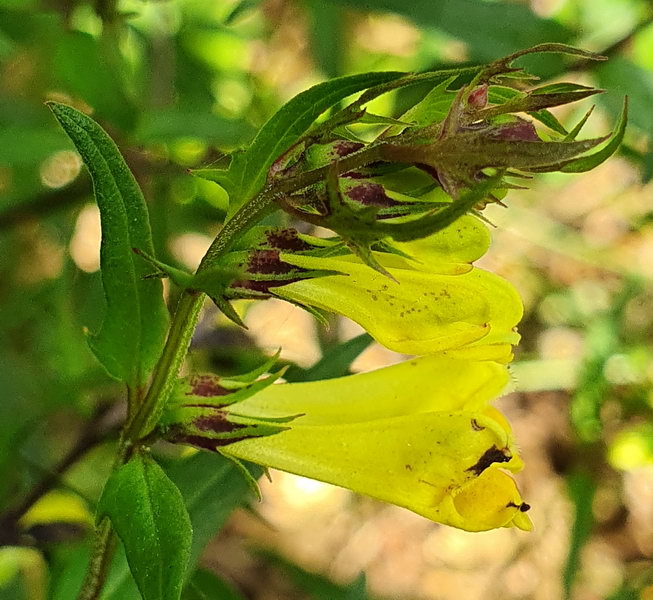Botanical Mountain Biking
Throughout the period of the lockdown, from the strict beginnings, to the more relaxed regimes now (early August), we have been fortunate here in the Netherlands, that we have been allowed out to exercise the whole time. After a day sitting at my desk in my home office I have certainly been ready to get out on my bike, so that means that most days I have been out appreciating the woods nearby. In order to add a bit of extra interest, I have tried to take a photo of a different plant in flower each evening. I have been at it several months and so far not running out of flowers. Here are a few examples.
Viola oderata is known in Dutch as March Violet and indeed this photo was taken back in March. That time of the year, one of the joys of being out on your bike is seeing all the fresh spring flowers coming out one after the other.
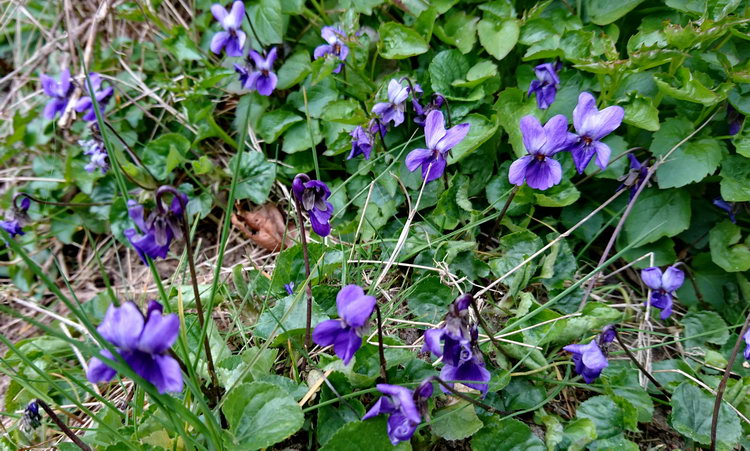
On the dry sandy grounds around here, there are not a lot of rare plant species, but one which is quite special is Maianthemum bifolium. In the UK, where I grew up, it is incredibly rare, only being found in a very few places. I still remember the excitement of seeing it for the first time, growing on the Veluwe. In the Netherlands, it is on the edge of its distribution; further to the West it becomes more common.
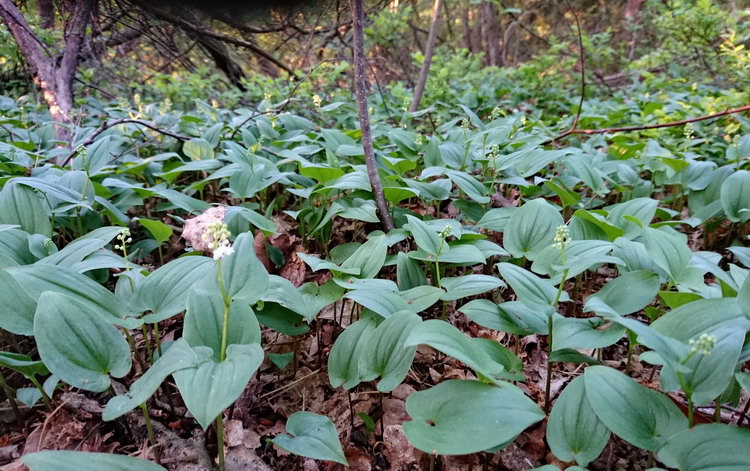
Some wild flowers are as spectacular as the garden varieties. The native Iris, Iris pseudacorus, grows with its feet in water and it is every bit as beautiful and elegant as a tropical orchid.
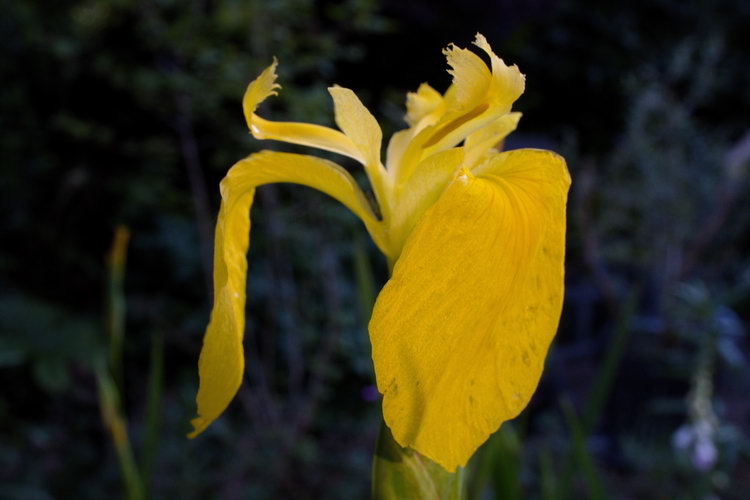
A lot of wild plants look quite unassuming until you take a close look. Not always so easy to do if you are whisking by at high speed on your mountain bike, or even if you trundle by at the speed I usually go at. That means that it is easy to think that there are not so many different species around, as they can look the same at first glance. These two Rumex species (sanguineum on the left and obtusifolius on the right) look much the same from a distance, but their fruits look entirely different in close-up. However, mountain bikers really need to know what Rumex obtusifolius looks like, because it is the one which you can rub on a nettle sting. When I was a student, my lecturer in organic chemistry told me that he had isolated a chemical which he called rumexin from their leaves, and discovered that it is in fact a mild local anaesthetic.
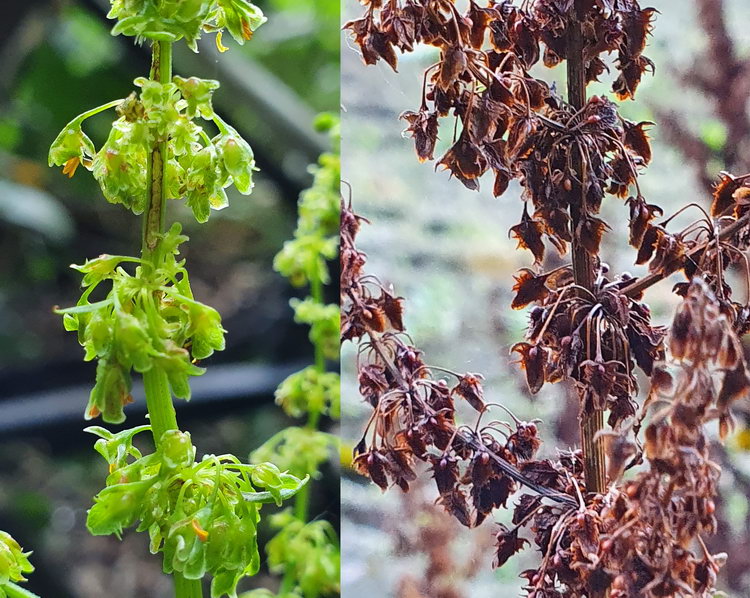
Another group of plants which bears closer inspection is the mosses. After it has rained, which brings out their lovely fresh greens, they can look wonderful carpeting the forest floor, but if you look closer, then they can also be fascinating. The one below is called Rhitidiadelphus squarrosus, in Dutch hook moss ('haakmos') because of the form of its shoot tips.
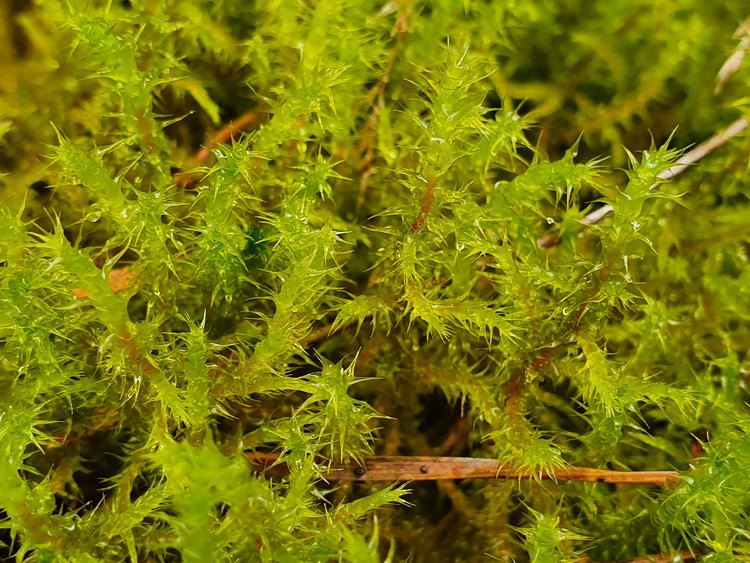
Plants are a part of the landscape and help form that landscape. Which plants grow in any given place is determined by all sorts of factors, and that changes with time. The grass that you see dominating the landscape below, Molinia caerulea, has become much more abundant round here than in the past. The intensive agriculture and other sources of pollution has led to a lot of nitrogen pollution in the air and rain, and that acts as a fertilizer. Grasses respond to that by growing more vigorously and other plants like heather not only don't grow better, but also can be more susceptible to pests and diseases. Unfortunately, knowledge of those processes can spoil your appreciation of what would otherwise be just a beautiful wild landscape.
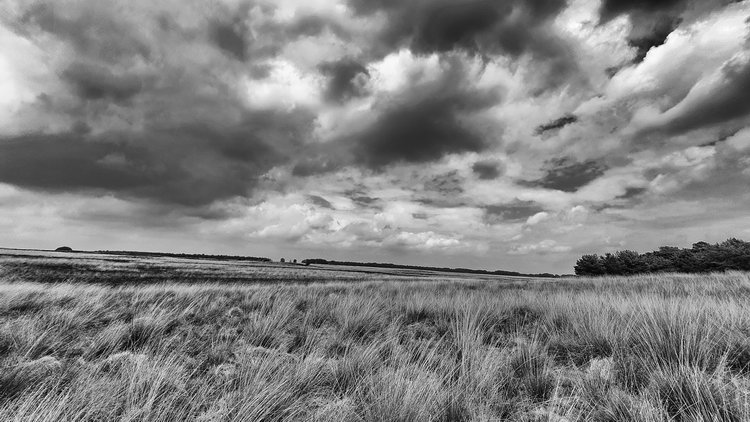
But that isn't always the case. Sometimes knowledge of the ecology helps appreciation of what you see. Melumpyrum pratense is flowering along the edges of the paths in the woods at the moment. It is a hemiparasite, which means that it depends on part on other plants for its sustenance. In the books it says that this can be a variety of different plants, but in practice, if you see it flowering, I guarantee that if you look up, you will see the canopy of an oak tree above it. The Melumpyrum depends on the oak and (I guess) it is small enough that it won't do the oak any harm. A nice example of the interdependence of all life.
